How ABA Therapy Improves Reading and Writing Skills
July 18, 2025
Unlocking Literacy Through Tailored ABA Strategies

Harnessing the Power of ABA Therapy to Boost Reading and Writing in Children with Autism
Applied Behavior Analysis (ABA) therapy is a proven, evidence-based approach that significantly enhances reading and writing skills among children with autism. By breaking down complex skills into manageable steps and employing individualized techniques, ABA effectively addresses core challenges such as language deficits, fine motor difficulties, and attention issues. This article explores how ABA therapy facilitates literacy development, examining the specific methods, strategies, and evidence underpinning its success in improving educational outcomes for children on the spectrum.
Foundational Strategies in ABA for Literacy Development
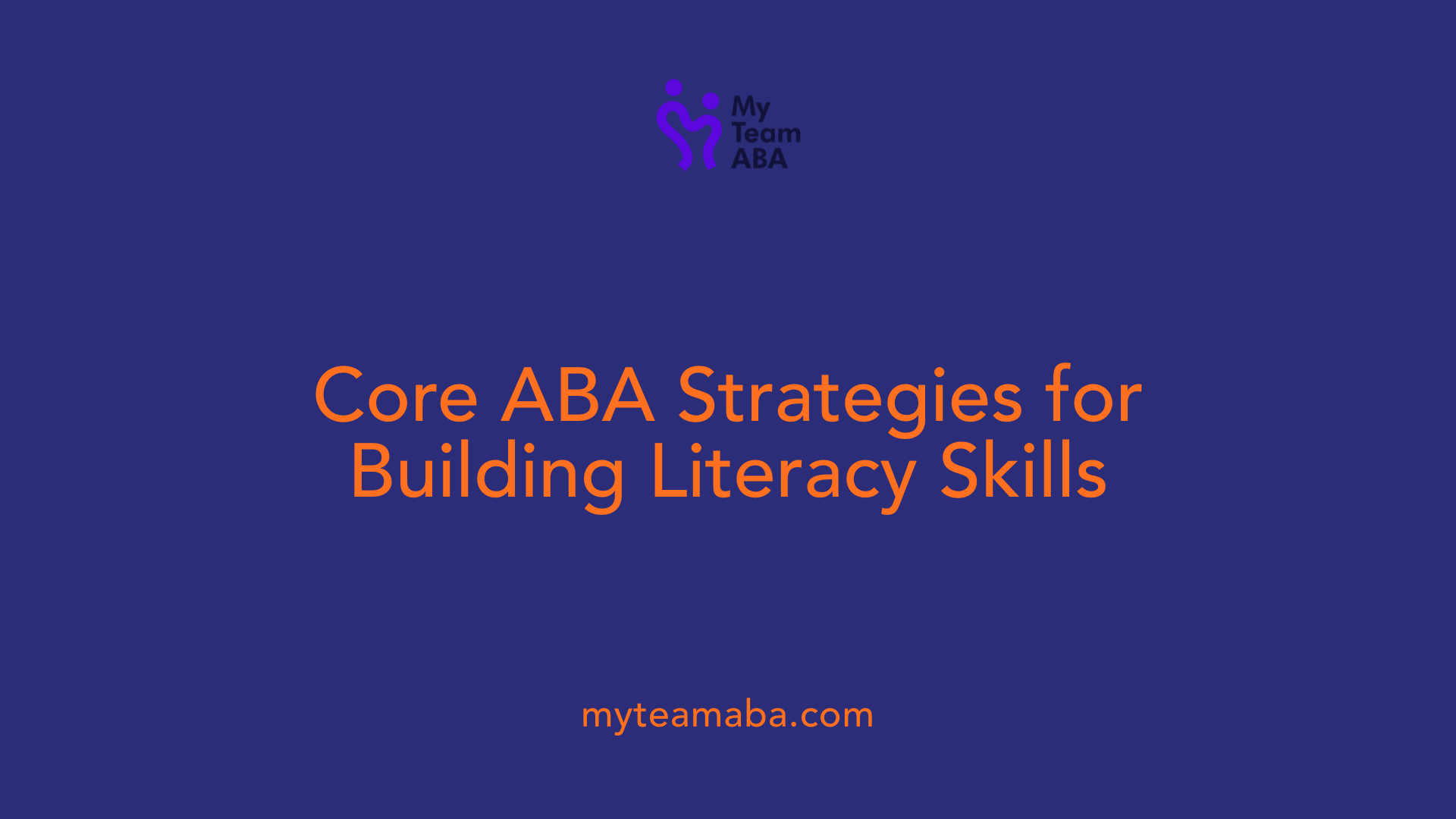
How does ABA therapy support reading and writing skills?
ABA therapy employs several structured strategies to foster literacy in children with autism. Central to these methods is task analysis, where complex reading and writing skills are broken down into smaller, manageable steps. For example, learning to hold a pencil, tracing shapes, or copying letters are taught through a sequential process, which makes mastering these skills less overwhelming and more achievable.
Visual supports are also integral. These include visual prompts, cards, and schedules that help children understand what is expected and guide their actions during reading and writing activities. Visual aids make abstract concepts tangible and support children who learn best through visual cues, thereby increasing engagement and comprehension.
Reinforcement plays a vital role in encouraging progress. Positive reinforcement techniques, such as praise, rewards, or preferred items, motivate children to practice and improve their skills. Reinforcements are personalized to each child's preferences and help maintain their interest and effort over time.
Use of task analysis to break down reading and writing skills
Task analysis in ABA involves dissecting the complex skill of reading or writing into simple, teachable units. For example, learning to write a sentence involves steps like holding a pencil correctly, forming individual letters, and then combining these into words and sentences.
By teaching each step individually and systematically, children build confidence and gradually develop more advanced skills. This approach ensures that foundational skills are solid before moving on to more complex tasks.
Incorporation of visual supports and prompts
Visual supports such as picture cues, step-by-step guides, and schedules help children stay focused and comprehend instructions. Prompts like visual cues or gestures can be used to encourage correct responses during literacy activities.
Gradual fading of prompts over time promotes independence, allowing children to perform reading and writing tasks with less assistance as they progress.
The role of reinforcement in learning
Reinforcement reinforces desired behaviors and helps establish routines. In literacy development, praise, tokens, or other rewards are used to motivate children to participate actively in reading and writing sessions.
This positive approach not only boosts motivation but also reduces frustration associated with difficulties, making the learning experience more enjoyable and effective.
| Strategy | Description | Example |
|---|---|---|
| Task analysis | Breaking skills into smaller steps | Teaching letter formation step-by-step |
| Visual supports | Using visual cues to aid understanding | Using picture cards to illustrate story elements |
| Reinforcement | Reward systems to motivate | Giving a sticker for completing a reading exercise |
How do these strategies come together?
Together, task analysis, visual supports, and reinforcement create a comprehensive approach to literacy in ABA therapy. They help children with autism develop decoding skills, reading fluency, vocabulary, and written expression.
This structured, consistent method ensures that children build literacy skills gradually but solidly, promoting independence and enjoyment in reading and writing activities.
Enhancing Language and Phonemic Skills
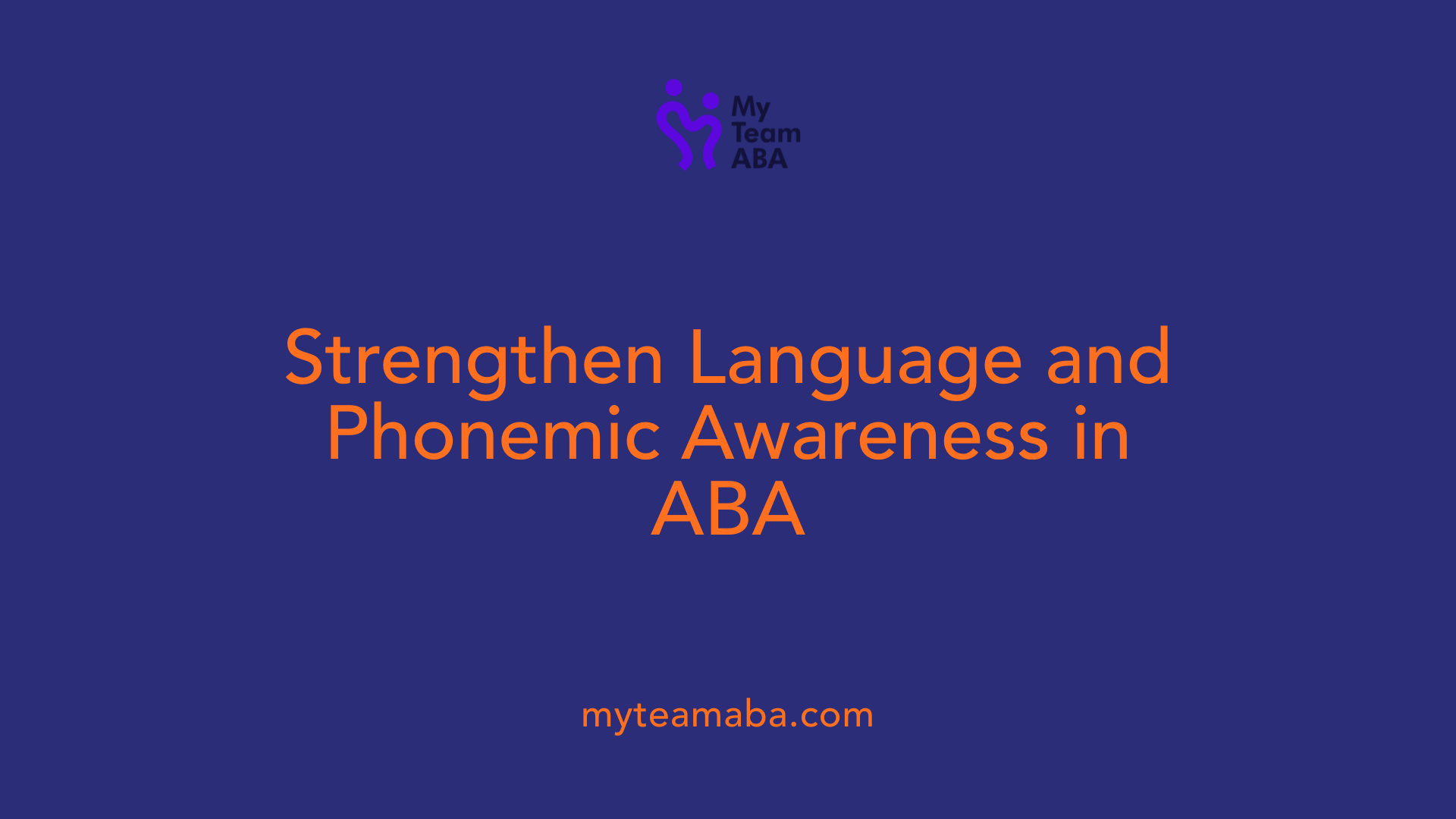
How does ABA therapy help improve reading and writing skills in children with autism?
ABA therapy plays a vital role in developing literacy skills among children with autism by applying structured and evidence-based methods. Its focus on foundational language abilities—both receptive and expressive—helps children better understand and use language, which is essential for reading comprehension and effective communication.
One of the core components of ABA therapy involves phonemic exercises. These activities enable children to distinguish individual sounds within words, greatly improving decoding abilities—the skill of translating written symbols into spoken language. Enhancing decoding skills is crucial for fluent reading and overall literacy.
In addition to language and phonemic work, ABA encourages attention and focus during reading activities. Strategies like visual schedules, reinforcement techniques, and interactive storytelling help children stay engaged, reducing frustration and increasing their capacity to learn.
Furthermore, ABA techniques support the development of fine motor skills necessary for writing. Tasks such as letter formation, pencil grip, and grasping are broken down into manageable steps, with positive reinforcement to motivate progress. Visual supports and assistive technology are often incorporated to aid understanding and participation.
By personalizing goals based on each child's strengths and challenges, ABA therapy integrates phonics, vocabulary, comprehension, and motor skills into comprehensive literacy programs. This individualized approach fosters steady progress, building confidence and independence in reading and writing.
What strategies does ABA use to support early literacy?
- Improving language comprehension with tailored activities
- Incorporating phonemic exercises for sound discrimination
- Using visual schedules and prompts to improve attention
- Engaging children in group reading and storytelling
- Supporting fine motor and writing skills through task analysis and reinforcement
These methods collectively create a supportive learning environment that addresses the diverse needs of children with autism, paving the way for better literacy and academic success.
Supporting Skill Acquisition Through Interactive Methods
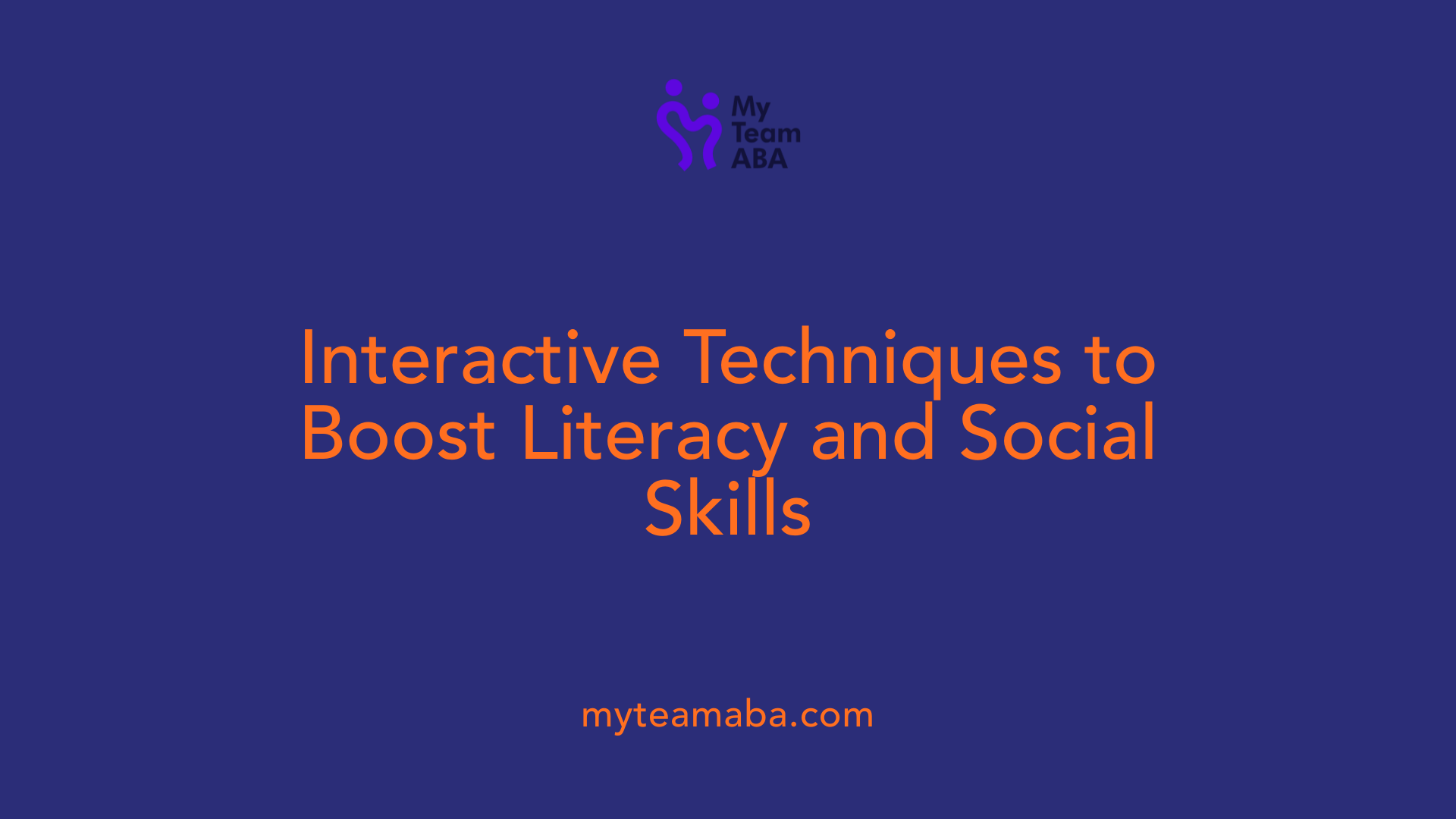
How do group reading sessions and storytelling enhance literacy and social skills?
Group reading and storytelling are effective strategies within ABA therapy that promote both literacy development and social communication. During these activities, children learn to take turns, listen actively, and interpret stories, which helps build their understanding of social cues and emotional context.
Interactive storytelling encourages children to participate by asking questions, predicting story outcomes, and expressing their thoughts. These interactions strengthen expressive and receptive language skills, making it easier for children with autism to share ideas and understand others.
Additionally, group settings create opportunities for peer engagement, fostering social skills such as sharing, cooperation, and understanding perspectives. When combined with positive reinforcement, these activities motivate children to participate actively, thus reinforcing literacy and social communication in a supportive, engaging environment.
How do literacy activities support social communication?
Engaging in literacy activities like shared reading and storytelling not only enhances language comprehension but also addresses social communication challenges. Children learn to follow instructions, understand social cues in stories, and practice conversational turn-taking.
These activities often include visual supports and prompts, which help children grasp the meaning behind social interactions depicted in stories. As they improve their comprehension, children become more confident in engaging in social exchanges, making literacy a bridge to better social integration.
Engagement strategies to foster interest in reading and writing
To sustain interest, ABA therapy employs strategies such as visual schedules, reward systems, and interactive technologies. Visual schedules prepare children for reading and writing tasks, reducing anxiety and increasing focus.
Rewards tailored to individual preferences—like tokens, praise, or favorite activities—motivate participation and reinforce learning milestones.
Incorporating assistive technology, such as speech-generating devices or engaging apps, can also make literacy activities more accessible and enjoyable. These methods collectively help children build enthusiasm for reading and writing, laying the foundation for ongoing academic success.
Addressing Motor Skills and Writing Difficulties
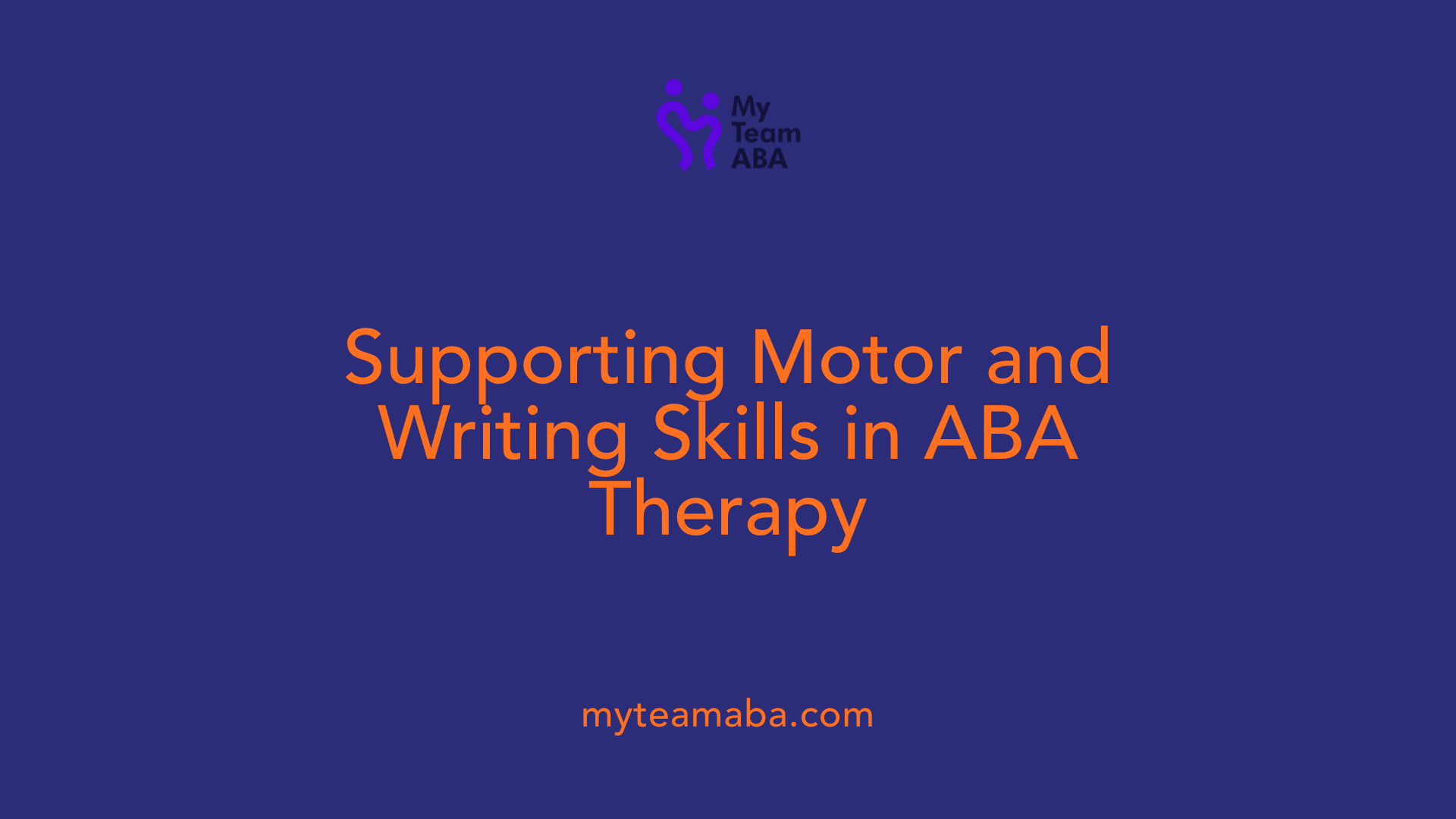
How effective is ABA therapy in developing reading and writing abilities?
Applied Behavior Analysis (ABA) therapy offers a structured approach to improving reading and writing skills in children with autism. Its effectiveness stems from evidence-based strategies such as task analysis, which breaks down complex skills into small, manageable steps, and positive reinforcement to motivate progress.
In literacy development, ABA emphasizes enhancing foundational skills like attention, language comprehension, and fine motor coordination. This includes targeted exercises to improve phonemic awareness, phonics, decoding, and spelling, which are crucial for reading fluency.
ABA also promotes comprehension and vocabulary through social stories, questioning, and cueing techniques. For writing, ABA integrates visual prompts, chaining, and modeling to help children learn letter formation, sentence construction, and writing stamina.
Research indicates that ABA's individualized programs can lead to significant improvements in literacy by reinforcing correct behaviors and reducing frustration during learning activities. When combined with traditional reading instruction, ABA may further enhance engagement and skills development.
While more rigorous studies are necessary to fully validate its effectiveness in every literacy component, existing evidence supports ABA as a beneficial complementary intervention to foster reading and writing abilities in children with autism.
Comprehensive, Individualized Approach for Lasting Gains
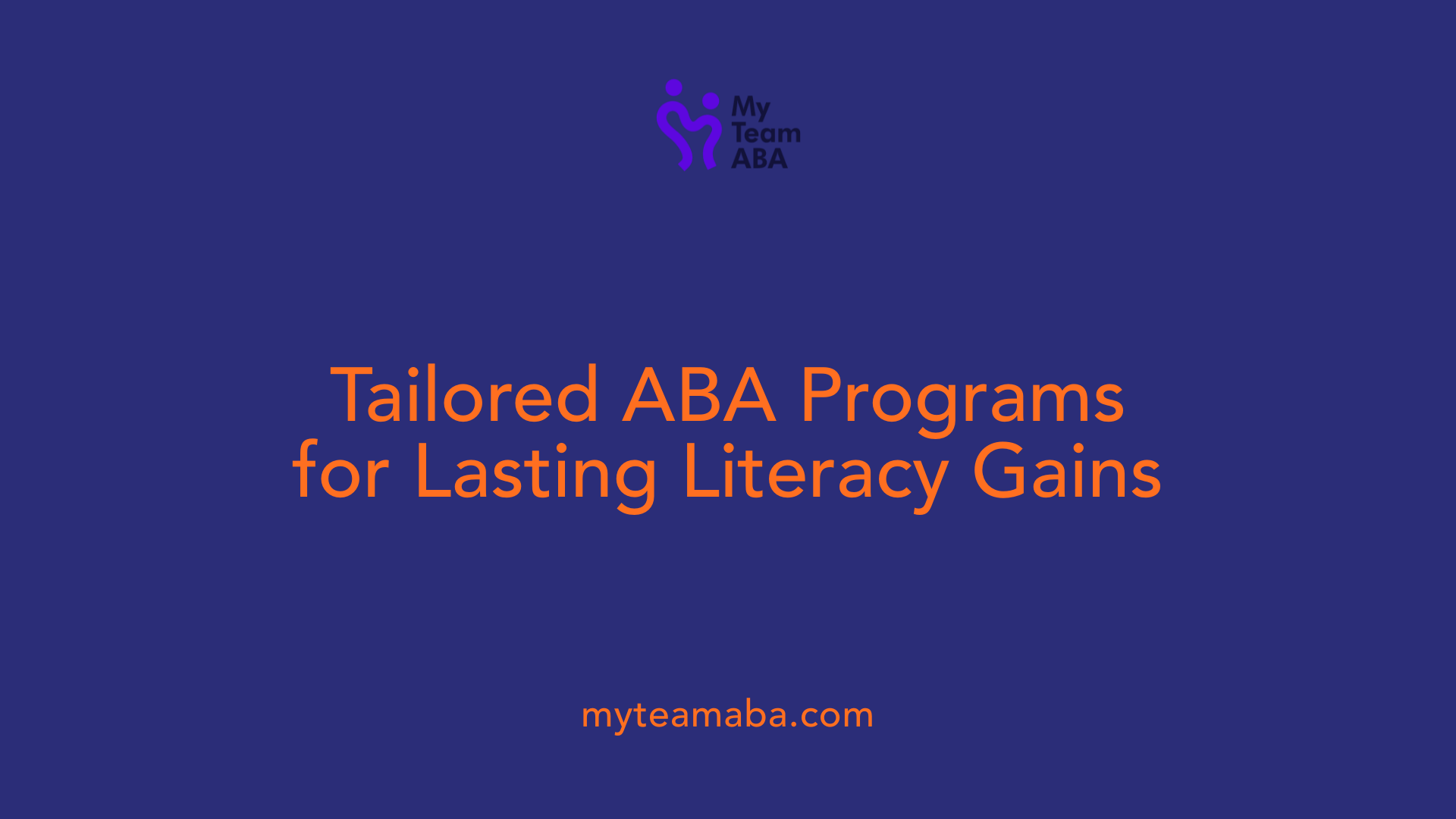
How does ABA therapy tailor programs to meet each child's unique needs?
ABA therapy emphasizes creating customized learning plans that address each child's specific strengths and challenges. For literacy, this involves assessing abilities in phonemic awareness, decoding, comprehension, and fine motor skills needed for writing. Therapists design step-by-step strategies, such as breaking down reading and writing into manageable tasks like letter recognition, sound differentiation, and handwriting practice. These programs often include visual supports, assistive tools, and sensory accommodations tailored to sensitivities. This personalized approach ensures that learning is both accessible and engaging, promoting meaningful progress.
How are physical, cognitive, and behavioral strategies combined?
Effective ABA programs integrate various strategies to foster overall development. Physical skills like finger-strengthening exercises support handwriting, while cognitive techniques such as task analysis help children understand the sequence of reading or writing steps. Behavioral methods, including positive reinforcement, motivate children and reinforce desirable behaviors. For example, a child might receive a reward for successfully completing a writing step or maintaining focus during reading activities. The combination of these methods addresses multiple facets of literacy development, making learning comprehensive and effective.
How is progress monitored and interventions adjusted?
Monitoring progress is a vital part of ABA therapy. Therapists regularly evaluate each child's performance through observations, data collection, and assessments. This ongoing process helps identify areas of improvement and areas needing more support. Based on findings, therapists modify the instructional strategies, reinforcements, and task complexity to ensure continuous growth. This adaptive system allows for timely adjustments, keeping learning challenging yet achievable. In literacy, this might mean gradually increasing the difficulty of reading materials or refining handwriting goals as skills improve. Such dynamic tailoring supports sustained progress and long-term success.
Fostering Lifelong Literacy and Development
ABA therapy is a powerful tool for improving reading and writing skills in children with autism. Its structured, individualized approach not only supports the development of foundational language, motor, and cognitive skills but also fosters social communication and emotional regulation. Through consistent application of evidence-based techniques like task analysis, reinforcement, and visual supports, ABA enhances literacy capabilities in a way that integrates seamlessly with other educational and therapeutic services. As research continues to evolve, the vital role of ABA in supporting educational progress and lifelong learning for children with autism remains clear, making it a cornerstone of effective autism intervention.
References
- Why ABA Therapy Matters for Literacy Growth - Behavioral Initiatives
- Does ABA Therapy Help Improve Writing Skills?
- Does ABA Help with Writing Skills? How Behavior Therapy Supports ...
- Does ABA Help with Writing Skills?
- How Does Autism Influence Reading and Writing? - A Better Way ABA
- How ABA Therapy Prepares Children for School Success
- How ABA Therapy Helps with Functional Skills Development in Kids
- Evidence-Based Reading Instruction for Individuals with Autism ...
